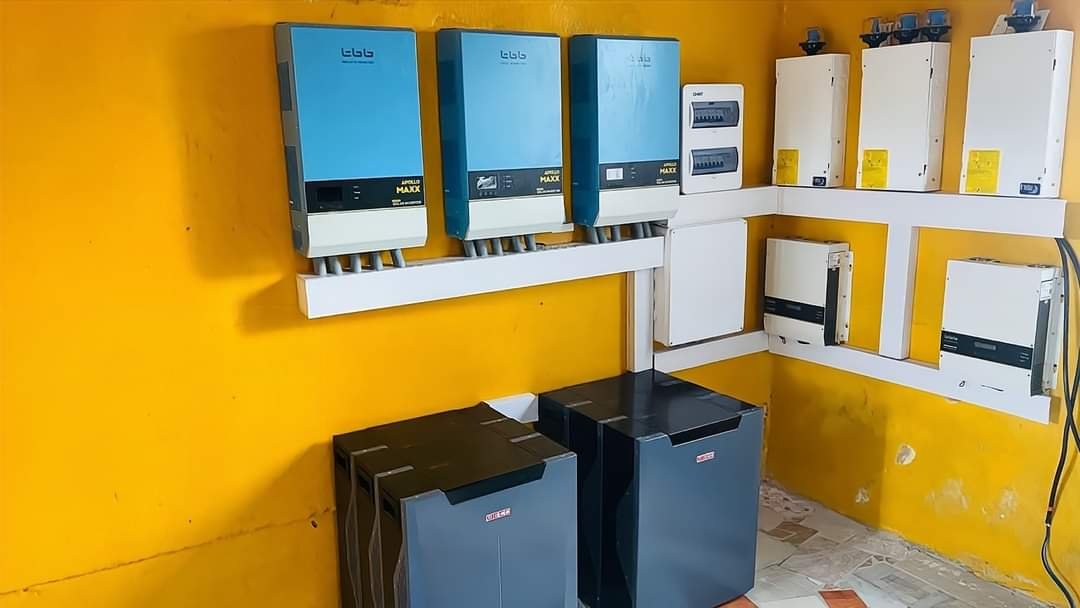A Comprehensive Guide for Solar Battery Users in Kenya
What is Depth of Discharge (DoD)?
A Comprehensive Guide for Solar Battery Users in Kenya
A Comprehensive Guide for Solar Battery Users in Kenya. As solar energy becomes more popular across Kenya — from homes and schools to farms and businesses — understanding how your solar battery system works is key to getting the best value from it.
One term you’ll often hear in solar discussions is Depth of Discharge, commonly shortened as DoD. If you’re not a technical person, don’t worry — this guide is written in plain language just for you.
✅ What Does Depth of Discharge (DoD) Mean?
Depth of Discharge (DoD) simply refers to how much of your battery’s power you have used. It is usually shown as a percentage.
- If your battery is fully charged and you use 30% of its energy, the DoD is 30%.
- If you use all of the energy stored, the DoD is 100%.
So in short:
DoD = Percentage of battery capacity used.
🪣 Easy Analogy: Think of Your Battery as a Water Tank
Imagine your battery is like a tank of water:
- When full, it’s at 100% charge.
- As you use power (just like drawing water), the level goes down.
- If you use half of the power, you’ve discharged 50% of the battery. That means the DoD is 50%.
📱 Airtime Example (Kenyan Style)
Another simple way to understand DoD is through airtime or mobile data.
- Suppose you top up your phone with Ksh 100 airtime.
- You make some calls and send a few SMS, spending Ksh 60.
- You’ve used 60% of your airtime — that’s the Depth of Discharge of your “airtime battery.”
⚠️ Why Does DoD Matter for Solar Battery Users?
Understanding and managing DoD helps you:
- Extend the life of your battery
- Avoid full drain-outs
- Save money in the long run
Most batteries are not meant to be completely drained to 0%. Doing this often will wear out the battery quickly, leading to poor performance or total failure.
🔋 Common DoD Limits by Battery Type
Different battery types are built to handle different Depths of Discharge:
| Battery Type | Recommended Maximum DoD | Why |
|---|---|---|
| Lead-Acid Batteries | 50% | Discharging beyond 50% shortens lifespan |
| Lithium-ion Batteries | 80% – 90% | Can safely discharge more deeply |
| Gel Batteries | 60% – 80% | Better than lead-acid, but not as strong as lithium |
| LiFePO4 (Lithium Iron Phosphate) | Up to 100% | Designed for deep discharges with long cycle life |
🔎 Note: Always check your battery’s user manual or specs for its recommended DoD.
🔁 DoD vs State of Charge (SoC)
These two terms are opposites:
- Depth of Discharge (DoD) = how much has been used
- State of Charge (SoC) = how much is left
Example:
- If DoD is 30%, then SoC is 70%
- If SoC is 20%, then DoD is 80%
🛡️ How to Protect Your Battery Using DoD
- Install a charge controller or inverter with battery management
- These devices automatically prevent over-discharge.
- Monitor battery levels regularly
- Especially if you’re off-grid or using the system heavily.
- Choose the right battery for your usage
- If you need deep discharges, lithium-ion or LiFePO4 is better.
- Avoid draining to 0%
- Especially with lead-acid batteries.
📊 Real-Life Example: Solar Battery Setup in Kenya
Let’s say you have:
- A 200Ah lithium battery (at 12V, giving 2400Wh)
- Recommended DoD = 80%
That means:
- Usable energy = 80% of 2400Wh = 1920Wh
- You should not use more than 1920Wh before recharging
Using more than that regularly will wear out the battery faster, even if it still powers your devices.
🧠 Final Thoughts: What Kenyan Solar Users Should Remember
- Depth of Discharge is NOT complicated — it just tells you how much of your battery has been used.
- Managing DoD wisely helps you get more years out of your solar system.
- If you’re buying a solar battery, ask about the recommended DoD and choose a type that matches your needs.
✅ Key Takeaways
- DoD = how much energy you’ve used from your battery (shown in %).
- Don’t always drain your battery to 0% — it shortens battery life.
- Lithium batteries handle deep discharges better than lead-acid.
- Monitoring your DoD helps you save money and protect your investment.
💬 Got Questions?
If you’re planning to install a solar system or upgrade your battery storage in Kenya and need advice on DoD, battery types, or sizing, feel free to reach out to our team. We’re here to help you go solar the smart way!



